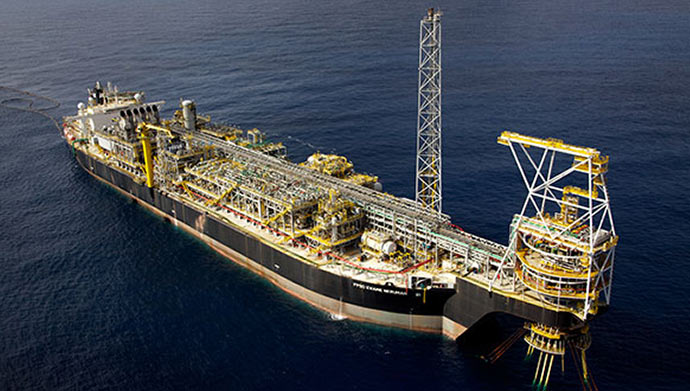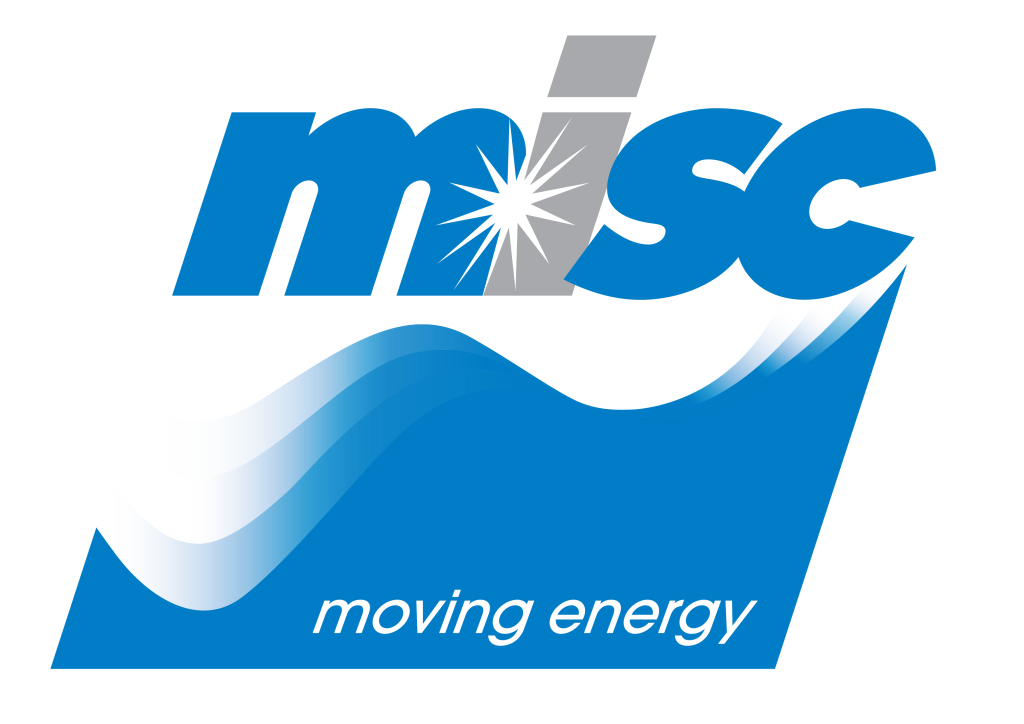Floating Production, Storage & Offloading System
What is Floating Production System
Floating Production System (FPS) is a semi-submersible that is used to produce oil and gas from wells on the seabed also known as “subsea wells”. Infrastructure such as underwater pipes, onshore storage tanks, and port loading facilities must be built in addition to the production system itself. There are three main components in the system which are the Floating Production Vessel (FPV), Mooring System and Subsea System, which include the risers and well system. FPS processes and offloads hydrocarbons without storing them.
Floating Production Storage & Offloading Units (FSPO) is considered the most versatile of all FPS variants. FPSOs is used to produce and store hydrocarbons in various sea depths. These units receive the entire wellstream, separate the oil, water, and gas, store the oil, and offload the stabilized crude oil to tankers for export.
Meanwhile, Floating Storage System (FSO) is an offshore device with the capability of storing petroleum and offload it to a shuttle tanker. A flexible riser and a swivel transport oil from a floating production unit through the turret. The turret also receives main electrical power via wires and a slip-ring mechanism (the FSO is normally unmanned, with operation carried out by telemetry).

Data result

In terms of demand for floating production systems, the FPSO is expected to be the most dominant product group. FPSOs are used by a number of businesses, including Royal Dutch Shell Plc, ENI, Petrobras, and Premier Oil, to extract crude oil from offshore fields. FSO is similar to FPSO, however it lacks the production capability that FPSO offers. Drilling efforts in offshore fields are also carried out using TLP and SPAR.
Several significant players rely heavily on growth tactics such as joint ventures and contracts, mergers and acquisitions, and geographic expansions and investments. In terms of value, the exploration and production industry’s capital outflow and operating expenses are enormous.
Geographically, Europe’s oil deposits are concentrated in offshore areas such as the Barents Sea and the Norwegian Sea, and the floating production systems industry is predicted to increase steadily in these areas. The market for floating production systems is expected to increase rapidly in Asia Pacific and North America as a result of rising population and strong industrialization.
GDP (Gross Domestic Product) For FPSO in Malaysia
The oil field services, and equipment (OFSE) industry largely supports upstream activities and contributes between RM1 and RM2 billion to GDP.
Land drilling services, offshore drilling services, geophysical services, engineering and contracting (E&C), equipment assembly and manufacturing, offshore structure construction and installation, and operations and maintenance (O&M) are all included in this industry (O&M).
While most of the big international players in OFSE, such as Schlumberger, Baker Hughes, and Technip, have already established themselves in Malaysia, PETRONAS has aided the growth of local firms such as Scomi, SapuraCrest, Kencana, Petra Perdana, and Wasco.

The is divided into three categories based on storage capacity: less than 1 MMBBL, 1-2 MMBBLs, and more than 2 MMBBLs.
FPSO units with a storage capacity of less than 1 million barrels (MMBBLs) are expected to see a considerable increase during the forecast period, as the vessels greatly assist in near-shore depths, making operations less complex.
Due to the awarding of new vessel contracts with huge capacity and the discovery of new bulk reserves, the 1-2 MMBBLs category is expected to grow significantly.
Global Market Size
In 2019, the global FPSO market was worth USD 13.06 billion. COVID-19 has had an unprecedented and devastating worldwide impact, with floating product storage and offloading units experiencing a negative demand shock across all regions as a result of the epidemic.
According to the research, the market would experience a massive drop of about -48 percent in 2020. During the period 2020-2027, the market is expected to increase at a CAGR of 14.3%, from USD 6.78 billion in 2020 to USD 17.30 billion in 2027. The abrupt increase in CAGR is due to the demand and expansion of this market, which will return to pre-pandemic levels once the pandemic is gone.
Why FPSO & FSO important for oil & gas companies? How it does it work?
Offshore production facilities known as FPSOs, or floating production storage and offloading vessels, house both processing equipment and storage for produced hydrocarbons. Most FPSOs are built in the shape of a ship, with processing equipment, or topsides, on the vessel’s deck and hydrocarbon storage below in the double hull. An FPSO stores oil or gas after processing before periodically unloading to shuttle tankers or transporting processed petroleum via pipelines. There are 3 reasons why FPSO and FSO become so important for oil and gas companies.
The first reason is to save time. It is known that FPSOs is able to connect to any pipeline. An FPSO can also migrate to a new place when an existing oilfield is drained. Thus, it will save time and money by avoiding the costly construction of permanent pipelines and facilities. As a result, FPSOs are an excellent choice for minor oil and gas fields that will run dry in a few years.
Another reason is to save cost. Using FPSO, it is not required for the oil and gas companies to build permanent structures such as pipelines and piled buildings. Moreover, FPSO also have the capability to store processed oil and gas and offload it to shuttle tankers for transportation to refineries.
Lastly, to make it convenience for oil and gas companies. This is because oil corporations can lease the vessels, providing them more control over their assets and allowing them to react to market pressures. An oil and gas company might potentially lease as many or as few FPSOs as it wants. Fixed assets, which take years to create and finance, do not allow for this kind of flexibility. This not only saves money, but it also helps to close the gap between small and major oil and gas companies, resulting in more healthy competition.
What Is the Difference Between FPSO & FSO?
| KEYS | FPSO | FSO |
|---|---|---|
| Concept | Connected with the oil drilling | Concerned with storage |
| Functions | Facilitates the processing and storage of oil and gas | To store and offload oil and gas without having the ability to process it. |
| Hull Usage | Double hull | Single hull supertankers |

Source by modec.com

Source by modec.com
Top 5 FPSO Companies in Southern East Asia
- Bumi Armada Berhad

Bumi Armada Berhad is a Malaysia-based worldwide offshore energy infrastructure and services business with a presence in over ten countries on three continents and over 1,200 employees from over 33 nationalities. They provide range of capabilities from Life-of-field surveys, drilling support, production facilities, installation & operations, pipe-laying, hook-up & commissioning, and vessel chartering. Bumi Armada owns and manages one liquefied natural gas (LNG) FSU and nine floating production storage and offloading units around the world as of 2016, three of which are part of a joint venture. The firm has a wide range of experience in Europe, Asia, Africa, and Latin America.
Website: https://www.bumiarmada.com
- BW Offshore Limited

BW Offshore Limited owns and operates floating production storage and offloading vessels all over the world. The company’s main activities are engineering, procurement, construction and installation, as well as lease and operation services for FPSOs. As of March 2017, the company had completed 38 projects, with 28 of them being floating production storage and offloading facilities with a 98 percent uptime.
Website: https://www.bwoffshore.com/
- MODEC Inc.

MODEC is a global supplier and operator of offshore floating platforms. The company has operations in all major offshore regions and currently owns and operates 23 Floating Production Storage and Offloading vessels. The company owns and manages 19 floating production storage and offloading boats as of 2016. In addition, it has completed nine floating production storage and offloading projects for its clients. The company’s operations have an average uptime of 99 percent. The FPSO Cidade de Campos dos Goytacazes MV29 is currently being built and is expected to be completed in Q4 2017.
Website: https://www.modec.com/
- Hyundai Heavy Industries Co. Ltd.

Hyundai Heavy Industries Co., Ltd. (or HHI) is the world’s largest shipbuilding company. The Shipbuilding & Offshore Business Unit’s Offshore Division blends knowledge in onshore process plants with offshore module manufacturing capabilities to provide a high-value added solution. In its offshore yard, the Shipbuilding & Offshore Business Unit’s Offshore Division has a dry dock with a capacity of 1 million tonnes and two extra-large gantry cranes, both capable of lifting 1,600 tonnes. The heavy lift vessel “HD 10000,” with a lifting capacity of 10,000 tonnes, enables HHI to create larger blocks.
Website: https://english.hhi.co.kr/
- Keppel Offshore & Marine Ltd.

Keppel Offshore & Marine is a world leader in providing total solutions to the offshore, marine and energy industries. The company offers considerable know-how across a wide range of skills, including design and engineering, new constructions, conversions and repairs, and support services, thanks to a global network of yards and offices. Keppel O&M is a pioneer in offshore solutions, having designed and built high-performance offshore platforms, production units, and specialised ships. It is a dependable partner in the conversion, repair, and modification of a wide range of rigs and vessels, as well as a provider of integrated solutions for the offshore renewable and infrastructure industries.
Website: https://www.keppelom.com/en/
- Fpso Ventures Sdn Bhd

FPSO Ventures Sdn. Bhd. (FVSB) was founded in 2003 to pursue opportunities and initiatives in the field of offshore floating systems operations and maintenance. They are a subsidiary of MISC Berhad, Malaysia’s largest logistics and shipping company, which is listed on the main board of the KLSE.
Website: https://www.fpsoventures.com/
- Yinson Holding Berhad

Yinson had divested its non-oil and gas businesses by mid-2016, allowing the company to focus on serving the offshore oil and gas industry. They have added three more FPSO projects to their portfolio after the acquisition (FPSO JAK, Ghana; FPSO Helang, Malaysia and FPSO Abigail-Joseph, Nigeria) The FPSO Anna Nery, their newest asset, is currently under development.
Website: https://www.yinson.com/
- MISC Berhad

Misc Berhad (MISC) is a world-leading provider of international energy-related maritime solutions and services, having been founded in 1968. Energy shipping and related activities, owning and operating offshore floating solutions, marine repair and conversion, engineering and construction works, integrated marine services, port management and maritime services, and maritime education and training are among the Group’s main businesses.
Website: https://www.misc.com.my/